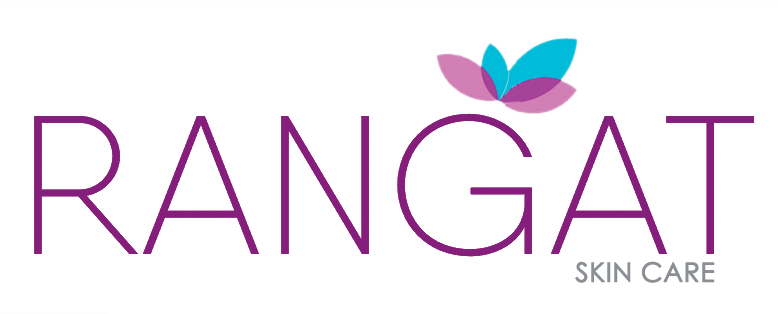Content
However, data engineers do need to strip out PII from any data sources that contain it, replacing it with a unique ID, before those sources can be saved to the data lake. This process maintains the link between a person and their data for analytics purposes, but ensures user privacy, and compliance with data regulations like the GDPR and CCPA. Since one of the major aims of the data lake is to persist raw data assets indefinitely, this step enables the retention of data that would otherwise need to be thrown out. Data lakes can hold millions of files and tables, so it’s important that your data lake query engine is optimized for performance at scale.
According to the experts, there are different types of data users which can get into three main categories based on their relationship to the data. The first ones are those who simply want a daily report on a spreadsheet. The second ones are those who do need more analysis but like to go back to the source to get data not originally included, and the third ones are those who want to use data to answer entirely new questions. Data is smoothly ingested into the data lake, where it is managed using metadata tags that help locate and connect the information when business users need it.
But data silos were not organized together in a way that led to meaningful insights. And data silos could not make the most of data for organizations seeking to modernize their data to the cloud. In and of itself, a data lake is a collection of data stored in its native format on a server, either on-premises or in the cloud. In other words, a data lake could be the data itself, and the data lake platform the servers, other equipment, hardware and software used to operate and maintain it.
Data Lake: Related reads
In addition to the type of data and the differences in the process noted above, here are some details comparing a data lake with a data warehouse solution. You might decide to break up your data warehouse into data marts and throw them into your lake, but you will find you need both. Analytics and modeling where the sources of data are disparate; will require a data lake. If you outgrow a data warehouse, you must build a bigger one, which takes time and money. The cloud allowed you to add or remove entire environments or applications within minutes and at minimal cost. Further, most cloud pricing models are on compute use and not storage!
- This process allows you to scale to data of any size, while saving time of defining data structures, schema, and transformations.
- A data lake is a collection of data and can be hosted on a server based on an organization’s premises or in a cloud-based storage system.
- Active Assist Automatic cloud resource optimization and increased security.
- This will allow their analytics team to continue finding insights in what songs their users are listening to.
- In a sane world, Santos, the perfect incarnation of the Trumpian “it’s true if I say it’s so” ethos, wouldn’t be seated in Congress come January.
- No matter what industry you’re in, a data lake can enhance customer experiences and give your business a competitive edge.
- Traditionally, many systems architects have turned to a lambda architecture to solve this problem, but lambda architectures require two separate code bases , and are difficult to build and maintain.
Users can either build their data lake on-premise (i.e, within an organization’s data centers) or by using a cloud-based provider, like Azure, AWS, Google Cloud, or Oracle Cloud Infrastructure. Data lakes contain a mix of structured, semi-structured and unstructured data, stored without being cleansed, tagged or manipulated. A data lake is a data repository for large amounts of raw data stored in its original format — a term coined by James Dixon, then chief technology officer at Pentaho.
Google Cloud Deploy Fully managed continuous delivery to Google Kubernetes Engine. Artifact Registry Universal package manager for build artifacts and dependencies. Database Migration Service Serverless, minimal downtime migrations to the cloud. Cloud Code IDE support to write, run, and debug Kubernetes applications.
Data lake vs. data warehouse
BI is an efficient approach that can allow specialists in your company to use advanced methodologies to work with large volumes of raw data. This helps obtaining meaningful insights, which can improve decision-making and unearth new opportunities for business growth. Another difference between the Data Lake and https://globalcloudteam.com/ Data warehouse is the accessibility and ease of use. Data warehouses, on the other hand, are more structured, which means that there are more limitations to process and manipulate data. Data Lake favors the democratization of data because ensures that all employees have access to data whenever they need it.
Data Cloud Alliance An initiative to ensure that global businesses have more seamless access and insights into the data required for digital transformation. Data Cloud for ISVs Innovate, optimize and amplify your SaaS applications using Google’s data and machine learning solutions such as BigQuery, Looker, Spanner and Vertex AI. I would like to get data almost at real time which I can analyse later in my flow . The second dataset consists of log files in JSON format generated by this event simulator based on the songs in the dataset above. These simulate app activity logs from an imaginary music streaming app based on configuration settings. Ultimately, the volume of data, database performance, and storage pricing will play an important role in choosing the right storage solution.
SAP Insights Newsletter
Structured Query Language is a programming language used for managing relational databases, along with NoSQL, which is a different language defined as non-SQL or non-relational. Because data lakes store unstructured data, neither SQL or NoSQL is applied to the data stored in a data lake. When the data is extracted, depending on the organization’s data network, SQL or NoSQL may be used to prepare the data for use in a database.
The key difference between a data lake and a data warehouse is that the data lake tends to ingest data very quickly and prepare it later on the fly as people access it. With a data warehouse, on the other hand, you prepare the data very carefully upfront before you ever let it in the data warehouse. Depending on the requirements, a typical organization will require both a data warehouse and a data lake as they serve different needs, and use cases. Solution Data Lake Modernization Google Cloud’s data lake allows you to securely and cost-effectively ingest, store, and analyze large volumes of diverse, full-fidelity data. Smart Analytics Generate instant insights from data at any scale with a serverless, fully managed analytics platform that significantly simplifies analytics. Accelerate business recovery and ensure a better future with solutions that enable hybrid and multi-cloud, generate intelligent insights, and keep your workers connected.
KT establishes data lake for S. Korea’s super-fast internet backbone … – Aju Business Daily
KT establishes data lake for S. Korea’s super-fast internet backbone ….
Posted: Mon, 26 Dec 2022 08:18:09 GMT [source]
Financial Services Computing, data management, and analytics tools for financial services. They store any kind of data and it provides resource savings to businesses. A data warehouse has a predetermined scheme for the data it stores. While there are plenty of benefits, challenges also exist regarding data lakes that organizations need to overcome.
The Evolution of Data Warehouses and Data Lakes
Cloud Data Loss Prevention Sensitive data inspection, classification, and redaction platform. Cloud Trace Tracing system collecting latency data from applications. Cloud NAT NAT service for giving private instances internet access. Storage Transfer Service Data transfers from online and on-premises sources to Cloud Storage. Application Migration App migration to the cloud for low-cost refresh cycles.
Non-relational and relational from IoT devices, websites, mobile apps, social media, and corporate applications. All data is accepted as long as it can pass the security to enter the lake. AttributesData WarehouseData LakeData traitsRelational from transactional systems, operational databases, and line of business applications. In early 2000, VMWare enabled organizations to virtualize their servers and storage . You still needed to provide the money for the cost of licenses, and the impact on your network was significant, but virtualizing your IT provided the breathing space until cloud.

Plus, apply data, transformations into a single, unified view for business consumption. There are five major components that support a data lake architecture. They can be remembered with the acronym ISASA – Ingest, Store, Analyze, Surface, Act. Data discovery – Discovering data is important before data preparation and analysis. data lake vs data warehouse It is the process of collecting data from multiple sources and consolidating it in the lake, making use of tagging techniques to detect patterns enabling better data understandability. Data quality – Information in a data lake is used for decision making, which makes it important for the data to be of high quality.
Better data science
In order to visualize how an organization might leverage a data lake, let’s take a look at a hypothetical use case. Data lakes require support by analysts who help the organization realize the data’s potential value. Ensure your organization’s data governance, security and privacy standards are maintained.
Applying a flexible, data consumption-based pricing model with a data lake will help. This model ensures that each user and team pays only for the precise compute and storage resources they use. Autonomous data management can help ease bottlenecks, using metadata, automation and AI to standardize and accelerate data delivery with minimal human intervention. Putting data to good use requires an ETL (extract-transform-load) process.

In other words, if you compare a data lake to a structured, relational database, the data lake may seem disorganized, although that isn’t necessarily a fair or accurate comparison. It offers organizations the chance to store their data in the native format before being transformed into a more structured database for future use. This makes the storage and move easier because there is no need to move data between legacy systems. Data lakes traditionally have been very hard to properly secure and provide adequate support for governance requirements. Laws such as GDPR and CCPA require that companies are able to delete all data related to a customer if they request it. Deleting or updating data in a regular Parquet Data Lake is compute-intensive and sometimes near impossible.
Challenges with Data Lakes
Join us virtually to learn how to deliver speed and automation for your data with a modern cloud architecture. Structured data is quantitative and highly organized, such as names, birthdays, addresses, social security numbers, stock prices, and geolocation. How to Prevent Downtime With Machine LearningData downtime isn’t just an annoying issue; it’s an expensive one. Data Lakes contain all forms of data and enable users to access data before it been transformed, therefore users can get faster results than the traditional Data warehouse. Data Lake support SQL and various options and languages for analysis and provides features to address advance requirements. Now that you understand the value and importance of building a lakehouse, the next step is to build the foundation of your lakehouse withDelta Lake.
Companies that offer a smartphone app to its customers may be receiving that data in real time or close to it, as customers use that app. But it allows the marketing department to do very granular monitoring of the business and create specials, incentives, discounts, and micro-campaigns. That’s a complex data ecosystem, and it’s getting bigger in volume and greater in complexity all the time. The data lake is brought in quite often to capture data that’s coming in from multiple channels and touchpoints.
History and evolution of data lakes
However, they are now available with the introduction of open source Delta Lake, bringing the reliability and consistency of data warehouses to data lakes. Data lakes that grow to become multiple petabytes or more can become bottlenecked not by the data itself, but by the metadata that accompanies it. Delta Lakeuses Spark to offer scalable metadata management that distributes its processing just like the data itself. As the size of the data in a data lake increases, the performance of traditional query engines has traditionally gotten slower.
